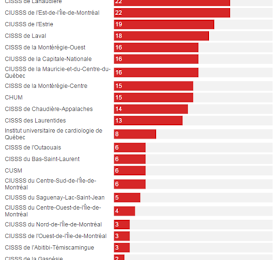SALEM, Ore. — A mystery philanthropist has been spreading cheer one $100 bill at a time for more than three years in and around Salem, Ore.
He randomly hides the bills to be found at stores, markets, fairs and festivals, surprising and delighting unsuspecting shoppers and patrons.
When the first reports surfaced in May 2013, I christened him with the nickname Benny becauseBenjamin Franklin is on the $100 bill. Not long after, when it appeared others might be trying to steal his thunder, he began signing his bills.
A friend of his came forward to act as a liaison, confirming his handiwork. When she died, a replacement quickly stepped forward, emphasizing just how serious Benny’s circle of friends are about maintaining his anonymity and how this has never been about him, but about helping and inspiring others.
Even so, Benny has been known to be brazen. He often frequents stores during peak shopping times and high-profile events that draw thousands of people. Apparently, that’s part of the fun for him.
To date, he has hidden more than $50,000 worth of $100 bills in the Salem area, and that’s only what has been reported. I keep track of when and where the bills are found, and if possible how they are used. He has left them in 26 different stores, at eight different events, and in a handful of different neighborhoods.
Grievous: Philando Castile:
As the investigation continues, details are emerging about Castile’s past encounters with police. Since 2002, law enforcement in Minnesota had pulled over the school cafeteria supervisor at least 52 times, according to state court records. He was charged with a number of offenses, including driving without proof of insurance, but many of the cases against him were dismissed.Castile was pulled over an average of more than three times a year, something that protesters argue is a sign of racial profiling.One profiling expert told CNN he agreed.“I would say that, looking at the record, it’s consistent with a pattern of being racially profiled,” says Myron Orfield, a professor of civil rights and civil liberties law at the University of Minnesota.“He’s got an awful lot of stops,” Orfield says. “It suggests a pattern of very excessive policing.”An attorney for the officer who shot Castile says the shooting had nothing to do with race and everything to do with a gun being present at the scene.
Not just Philando, but also Sen Tim Scott:
Following last week’s deadly shootings, South Carolina Sen. Tim Scott gave a deeply personal speech on the Senate floor in Washington, D.C., on Wednesday about the “deep divide” between communities and law enforcement.
While many law enforcement officers do good, he said, some do not. “I’ve experienced it myself.”
Scott revealed that he has been stopped seven times in the course of one year as an elected official. “Was I speeding sometimes? Sure. But the vast majority of the time I was pulled over for driving a new car in the wrong neighborhood or something else just as trivial.”
Stefan Lindblad, on Bruce Ware’s theory of the Trinity:
EG [=eternal generation], on the other hand, does nothing of the sort. EG, when left free of Ware’s entailments or expressions, upholds the homoousian. The Son is of the same essence as the Father because the Father necessarily, eternally, immutably begets the Son within the divine essence, without division of the divine essence. By virtue of this generation the Son personally possess the whole, undivided divine essence. He, therefore, subsists in the divine essence, not as submissive or subordinate, but as the fully divine Son of the Father. For which reason, despite his affirmations, despite his attempt at clarification, Ware’s version of ERAS [=eternal relations of authority and submission/subordination] not only remains shrouded in a cloud of theological incoherence, but contradicts the biblical and classical doctrine of EG. The novel glove (ERAS) does not fit the classical hand (EG).
To computer or not in the classroom?
Studies investigating the effects of computer use on student learning tend to follow one of two approaches: They either look for correlations between device use and student learning, or they experimentally assign people to use computers or not. The problem with the first approach is that a correlation does not entail causation. It could be that students who tend to use laptops do poorly because they’re the ones who are bored or prone to distraction, not due to computer use per se. The problem with the second approach is that experimental manipulations are more likely to last an hour than a full semester. Perhaps over the course of several weeks, students begin to benefit from computer-based notes, or from the opportunity to reference earlier material as a lecture unfolds.
The strongest form of evidence for the effects of computer use on classroom learning would come from a large-scale randomized control trial (RCT): an experiment in which students are randomly assigned to otherwise-identical courses that vary only in whether they allow students to use devices during class. For obvious reasons, this kind of experiment is difficult to conduct. In most educational contexts, students choose their courses — they aren’t randomly assigned. Different courses involve different instructors, different material and different tests. And if an instructor were to teach two versions of the very same class, she’d be pretty unlikely to adopt different policies about computers in each one.




